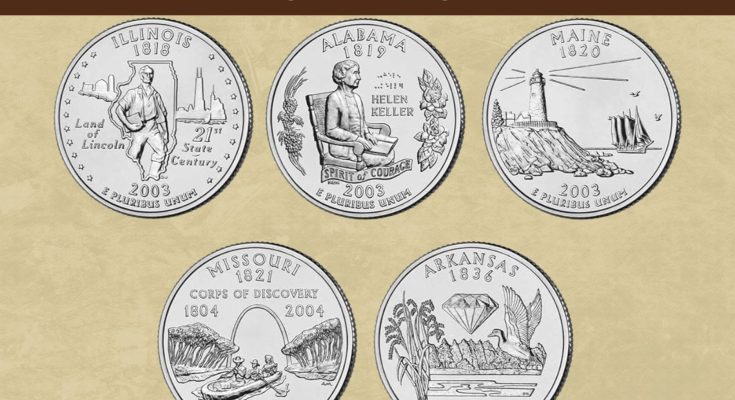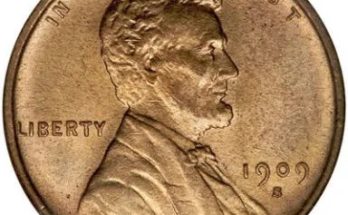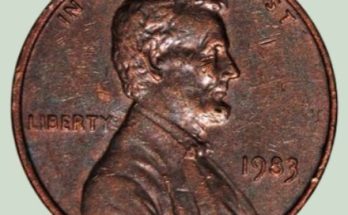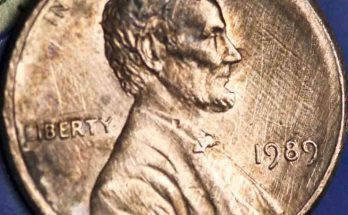Are you considering collecting 2003 quarters but wonder if these coins are worth adding to your collection? Are 2003 quarters worth anything? If you are looking to build a high-end collection, our 2003 quarter errors list will help.
The 2003 quarters are part of the popular 50 State Quarters Program that ran from 1999 to 2009 to celebrate cultural and historical sites or icons in each of the fifty states. In 2003, the program celebrated the states of Illinois, Alabama, Maine, Missouri, and Arkansas in that order. The reverse of the Illinois and Alabama quarters depict a young Abraham Lincoln and Hellen Keller respectively while the rest show images of iconic sites in the respective states.
Despite their popularity, 2003 quarters are only worth their value in circulated form. Even uncirculated examples are only worth more or less their face value.
So, are 2003 quarters worth collecting? Yes! If you know what to look for, these coins can be an excellent addition to your collection. Collecting errors is one of the most rewarding strategies for building a high-value quarters collection.
Our 2003 quarter errors list will reveal some of the most valuable quarter errors worth adding to your Washington quarters set. So, without any further ado, let’s jump in and discover 2003 quarters errors worth money.
1. 2003-D MS64 Indiana Quarter Inverted “D” Mintmark Error
One of the most interesting errors you might come across when collecting 2003 quarters is the inverted mintmark. As the name implies, this is an error in which the mintmark is accidentally punched upside down.
An inverted mintmark is a rare occurrence, so, as you might already guess, such an error can be worth a premium in uncirculated condition.
In 2006, Heritage Auctions sold a 2003-D Indiana quarter graded MS4 with an inverted mintmark error for a whopping $1230.
2. 2003-D MS65 Kentucky Quarter Spitting Horse Error
Another error you might encounter when collecting 2003 quarters is the spitting horse. As the name suggests, this is an error in which a die crack error next to the horse’s mouth makes it appear like the horse is spitting.
A die crack error occurs when a crack appears on the die’s surface due to pressure or normal wear and tear. As the die is put to use, small metal pieces gradually fill the crack and eventually the metal-filled crack will leave its impression on one or more planchets.
The spitting horse die crack error is one of a kind and can be worth good money. In 2010, for example, a collector on eBay paid a record $1235 for a 2003-D MS65 Kentucky quarter with a spitting horse error, making this one of the most valuable errors to add to your collection.
3. 2003-D MS63 Tennessee Quarter Misaligned “D” Mintmark Error
The next one on our 2004 quarter errors list is the misaligned mintmark. As the name suggests, a misaligned mintmark error is one in which the mint mark is punched slightly away from its usual spot on the coin.
Misalignment can happen due to a number of factors including an offset between the die and planchet. A shift in the planchet can also result in a misalignment and, subsequently, a misaligned mint mark error.
If you are lucky enough to come across a coin with a misaligned mint mark, you might sell it for a premium. For example, a collector at a Great Collections auction in 2007 paid a record $1150 for a 2003-D Tennessee quarter graded MS63 with a misaligned D mintmark error, making this another excellent addition to your collection.
4. 2003 No-Mintmark MS66 Ohio Quarter Double Die Obverse Error
A double die obverse is one of the most common errors in the 2003 quarters series. This error occurs when the die strikes the planchet multiple times, creating a doubling on features such the inscriptions and devices on the obverse or reverse side of the coin.
So, how much can you expect from a doubled die obverse error? The value of such an error largely depends on the intensity of doubling- coins with strong doubling on the inscription/devices will typically be worth more than those with only subtle doubling.
In 2011, Heritage Auction sold a 2003 no-mintmark Ohio quarter graded MS66 with an obverse doubled die error for a whopping $850, making this a worthwhile addition to your Washington quarters collection.
5. 2003-No Mintmark MS64 Louisiana Quarter Clashed Dies Error
The next error we’ll look at is the die clash. This error occurs when the obverse and reverse dies hit against each other without a planchet in between. This causes the dies to leave an impression of their respective design on each other, typically seen as ghost images.
When a planchet is eventually placed between the dies, it receives the ghost images. For example, if you come across a quarter where you can see the primary obverse image and a hint of the reverse image, it is likely a die clash error coin.
Depending on the coin’s condition, a die clash error coin can be worth a premium. For example, in 2020, Stack’s Bowers auctioned a 2003 no-mintmark Louisiana Quarter graded MS64 with clashed die error for an outstanding $950. There is no doubt that such an error would significantly improve the value of your collection.
6. 2003-D MS63 Mississippi Quarter Missing Clad Layer Error
Another interesting error you might encounter when collecting 2003 quarters is the missing clad layer. This is an error in which the upper clad layer of the coin is missing, usually due to a lamination error.
Planchets are made of layers of metal but sometimes, impurities can infest the alloy, weakening the bonds between the layers. This can result in peeling, bubbling, and cracking of the layers.
In the case of a missing clad layer error, the upper layer peels off, exposing the copper inner core. The clad layer may peel off on one or both sides of the coin.
Missing clad layer quarter errors are in high demand and can be worth good money. For example, in 2021, Heritage Auctions sold a rare and valuable 2003-D Mississippi Quarter MS63 with a missing clad layer error for a remarkable $745.
7. 2003-D MS65 Illinois Quarter Re-punched “D” Mintmark Error
The next one on our 2004 quarter errors list is the re-punched mintmark. As the name suggests, this is an error in which the mintmark is struck multiple times in slightly different positions, creating a visible doubling effect.
You will likely need a keen set of eyes or the help of a professional grader to identify a re-punched mint mark error. All in all, the value of such an error largely depends on the intensity of doubling—the more intense and visible the re-punching, the more valuable the coin tends to be.
So, how much would a re-punched mint mark error coin be worth? Such a coin can be worth good money—for example, in 2018, Coin World Auctions auctioned a 2003-D Illinois Quarter graded MS65 with a re-punched “D” mintmark error for a whopping $820.
8. 2003-D MS64 Georgia Quarter Die Crack Error
Another common error you might find in the 2003 quarters series is the die crack. A die crack occurs when a small crack forms on the die due to normal wear and tear, or the sheer pressure exerted on the due during striking.
As the die continues to be put to use, small metal pieces fill the crack. Eventually, the metal-filled crack leaves its impression on the planchet, appearing like a raised line on the coin’s surface.
As a general rule, larger die cracks with a peculiar appearance will generally be more eye-catching and valuable. In 2006, Great Collections sold a dazzling 2003-D Georgia Quarter graded MS64 with die cracks on the obverse and reverse for an impressive $600.
9. 2003 No-Mintmark MS66 South Carolina Quarter Incorrect Reverse Die Error
Although not common, mint workers may sometimes strike planchets using the wrong die. This may result in a coin having the correct obverse image and a mis-matched reverse image, or vice-versa.
Sometimes, after realizing they’ve used the wrong die, mint workers may then attempt to strike the same planchet with the correct die, resulting in overlapping of the images or part of the design missing or being misaligned.
A mistaken die error is one of the most dramatic you might come across, so you can expect such a coin to be worth good money. For example, in 2014, Heritage Auctions sold a spectacularly rare 2003 no-mintmark South Carolina Quarter graded MS66 with an incorrect reverse die error for an impressive $1,000.
Summary
Despite their popularity, 2003 quarters are only worth their face value. But, this doesn’t mean you cannot build a high-value collection with coins from this series. As our 2003 quarter errors list shows, collecting rare errors can significantly boost your collection’s value. Whether it is a broad-strike or a misaligned die error, each error brings something special to your collection. Happy collecting!



